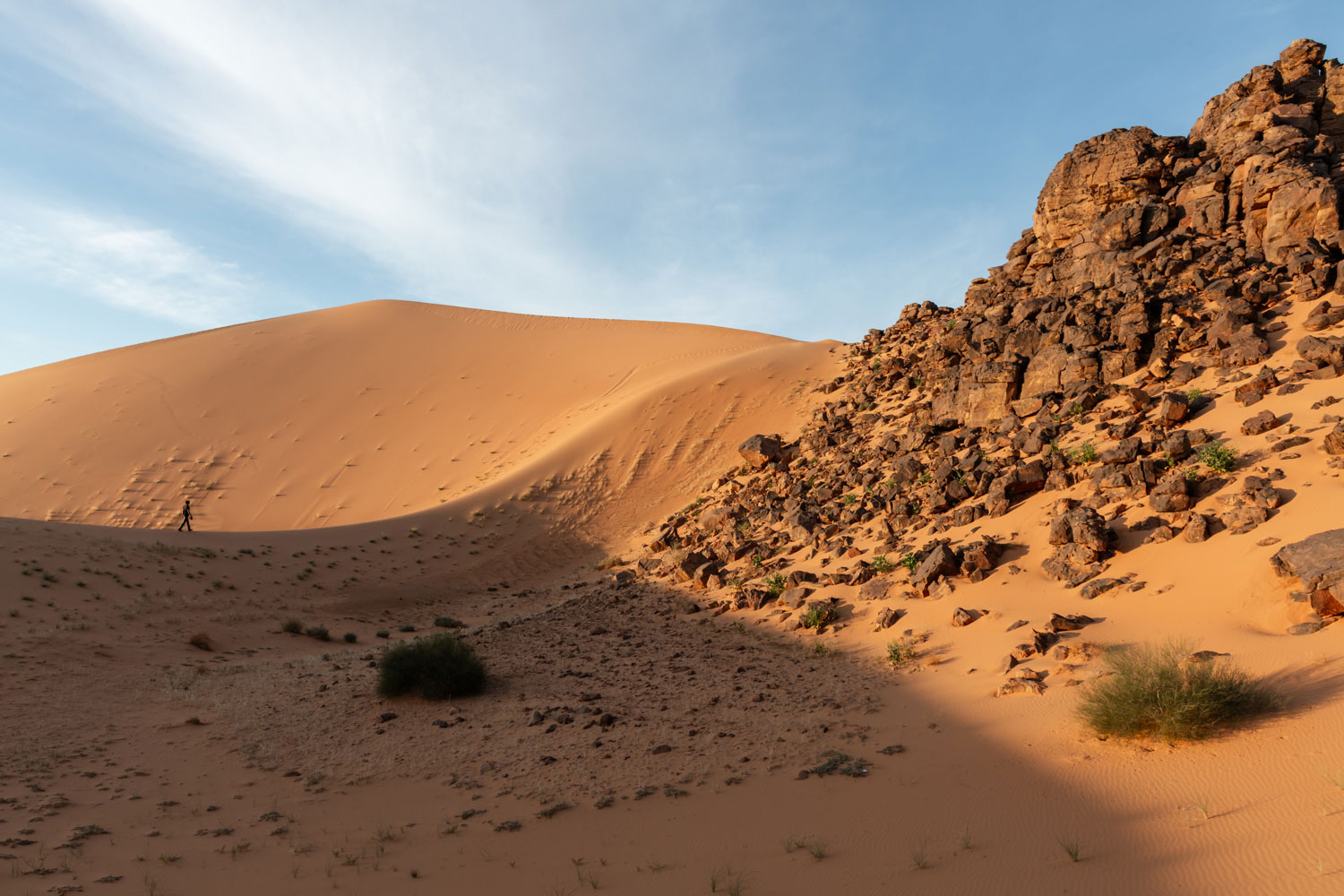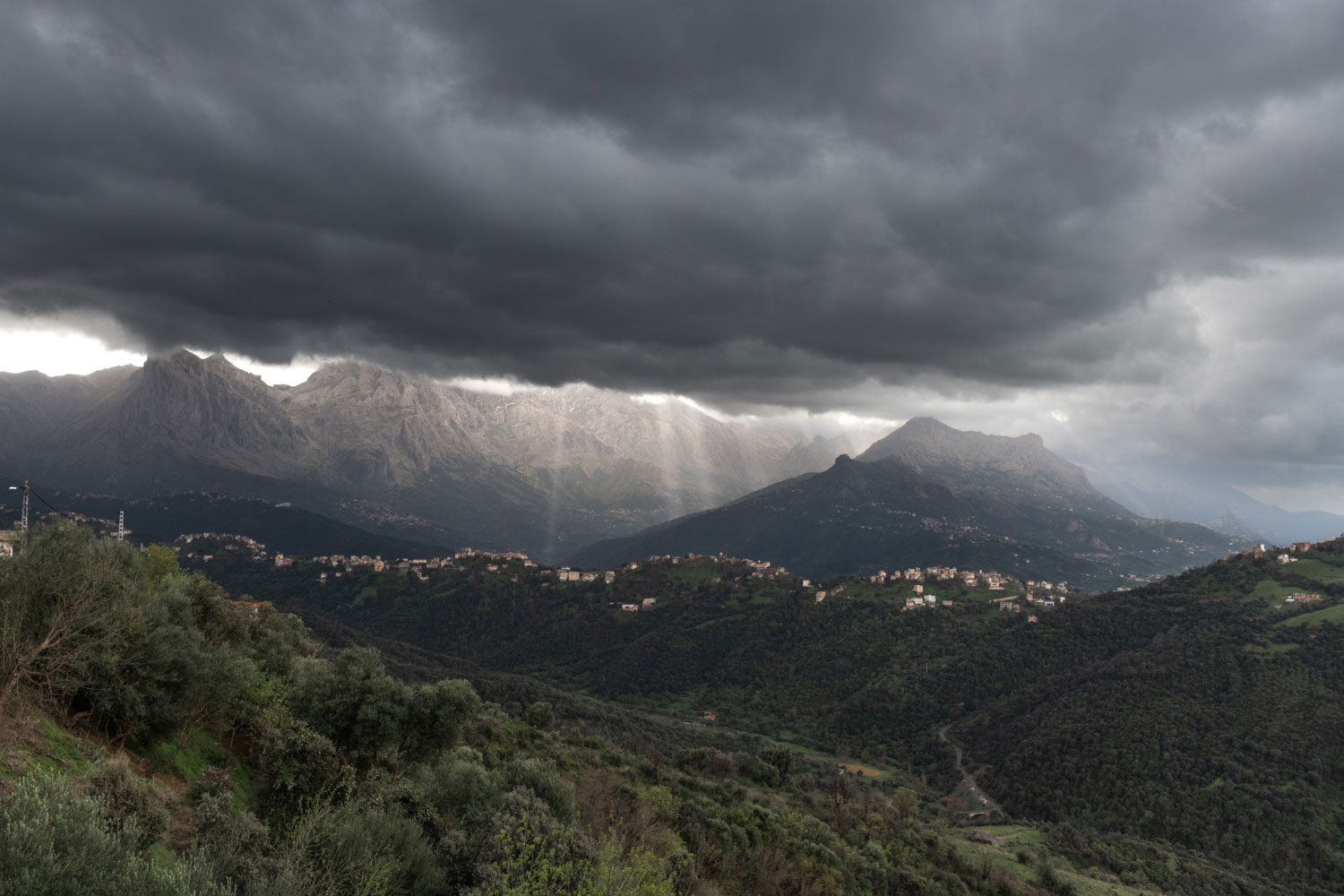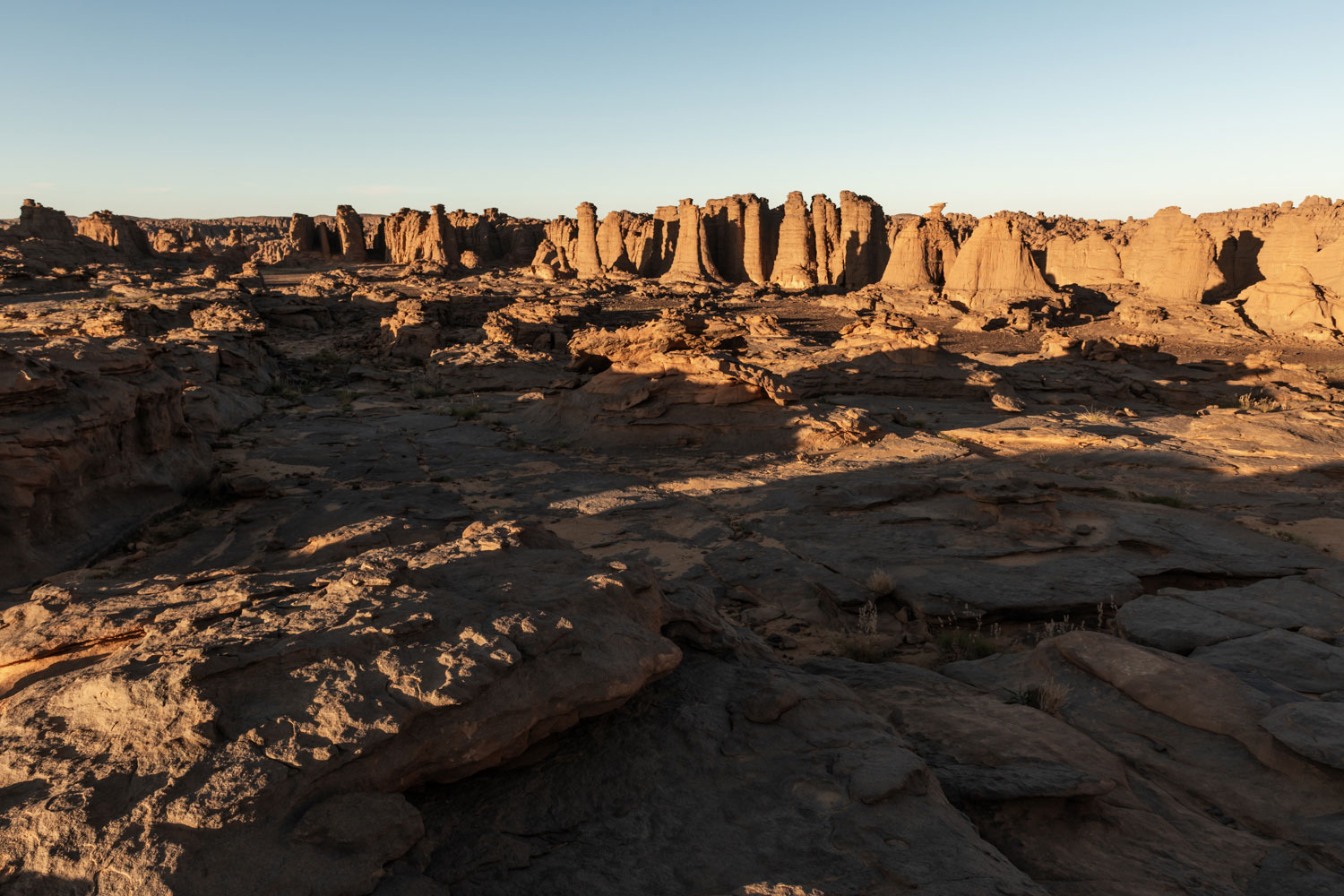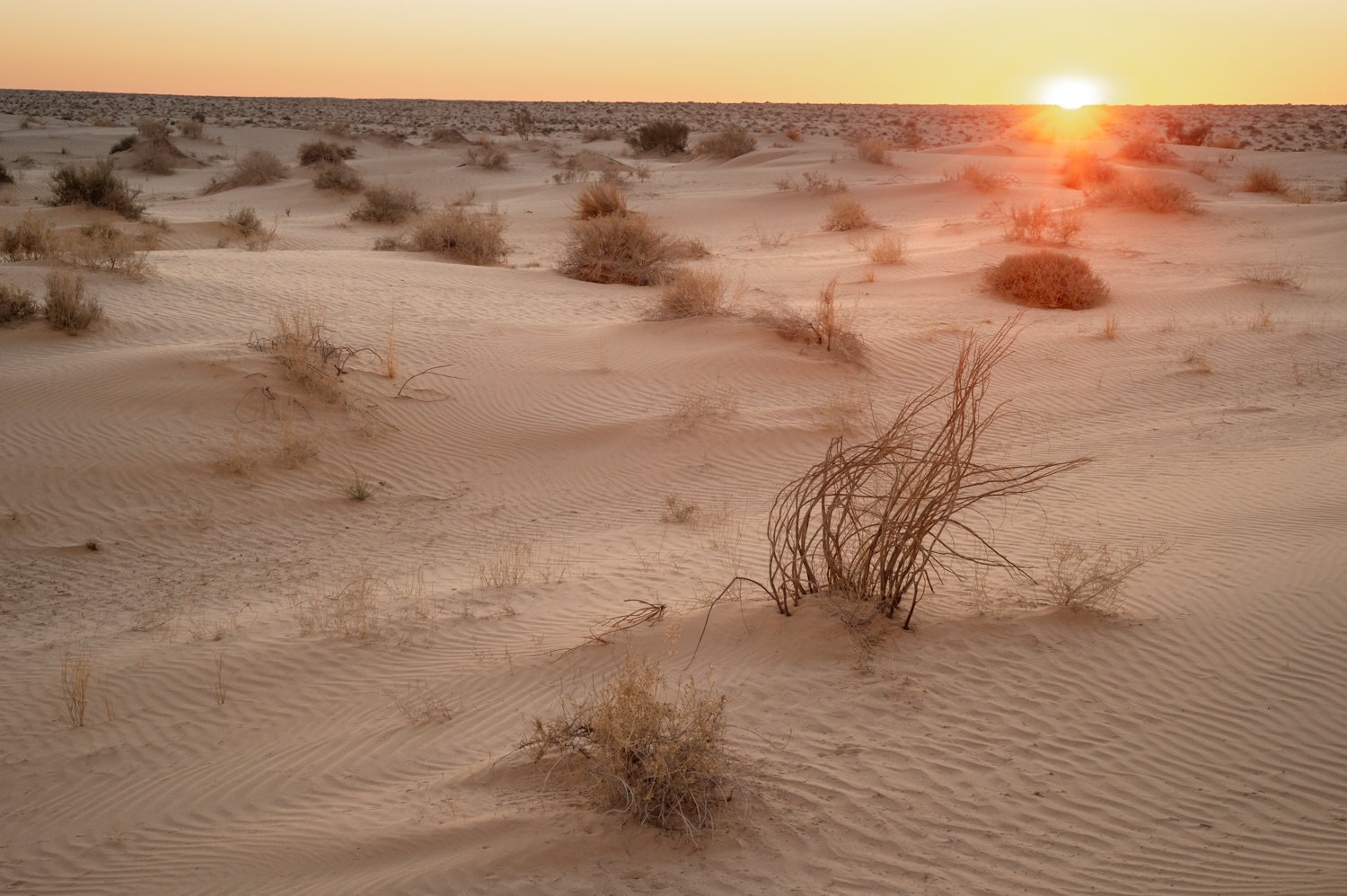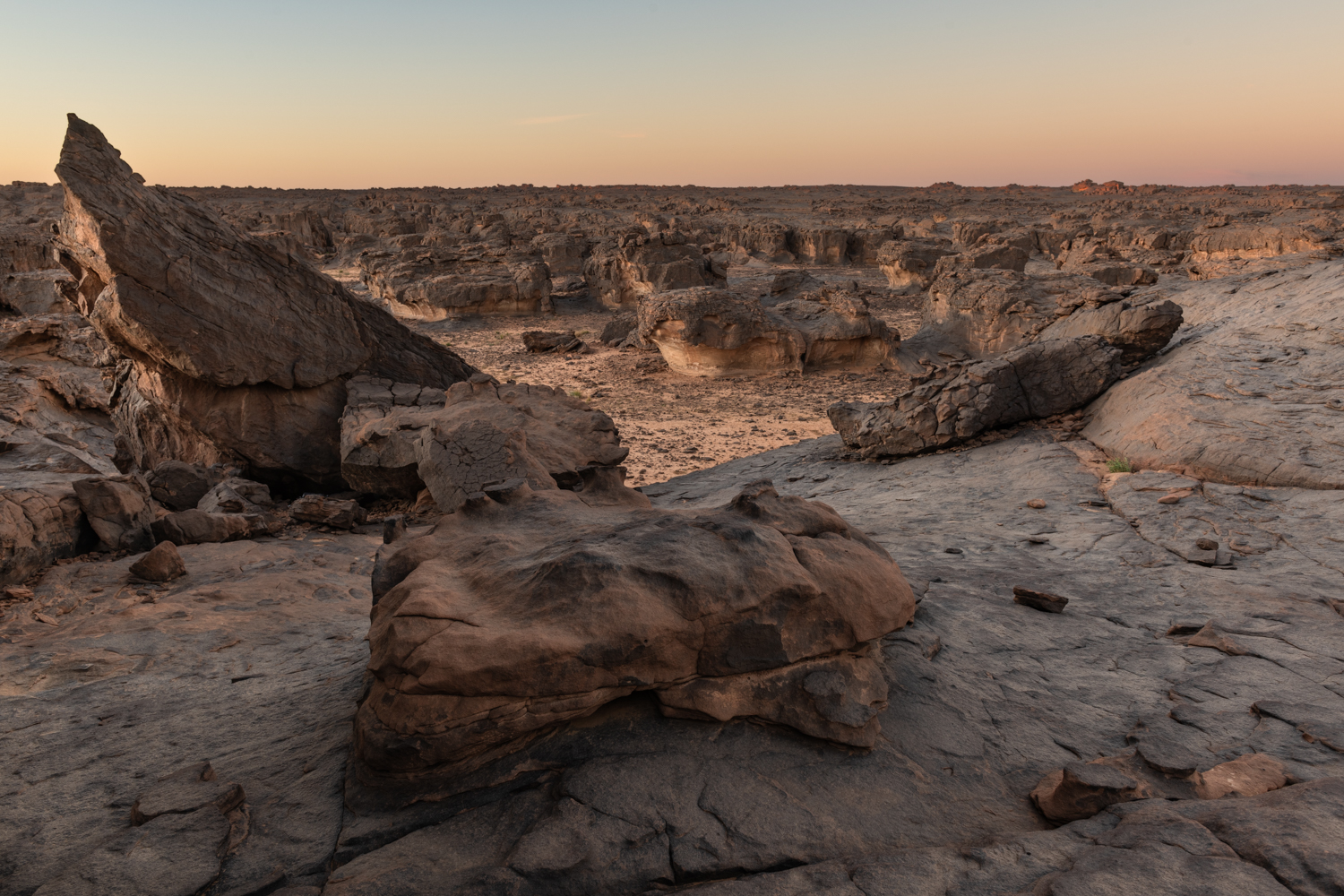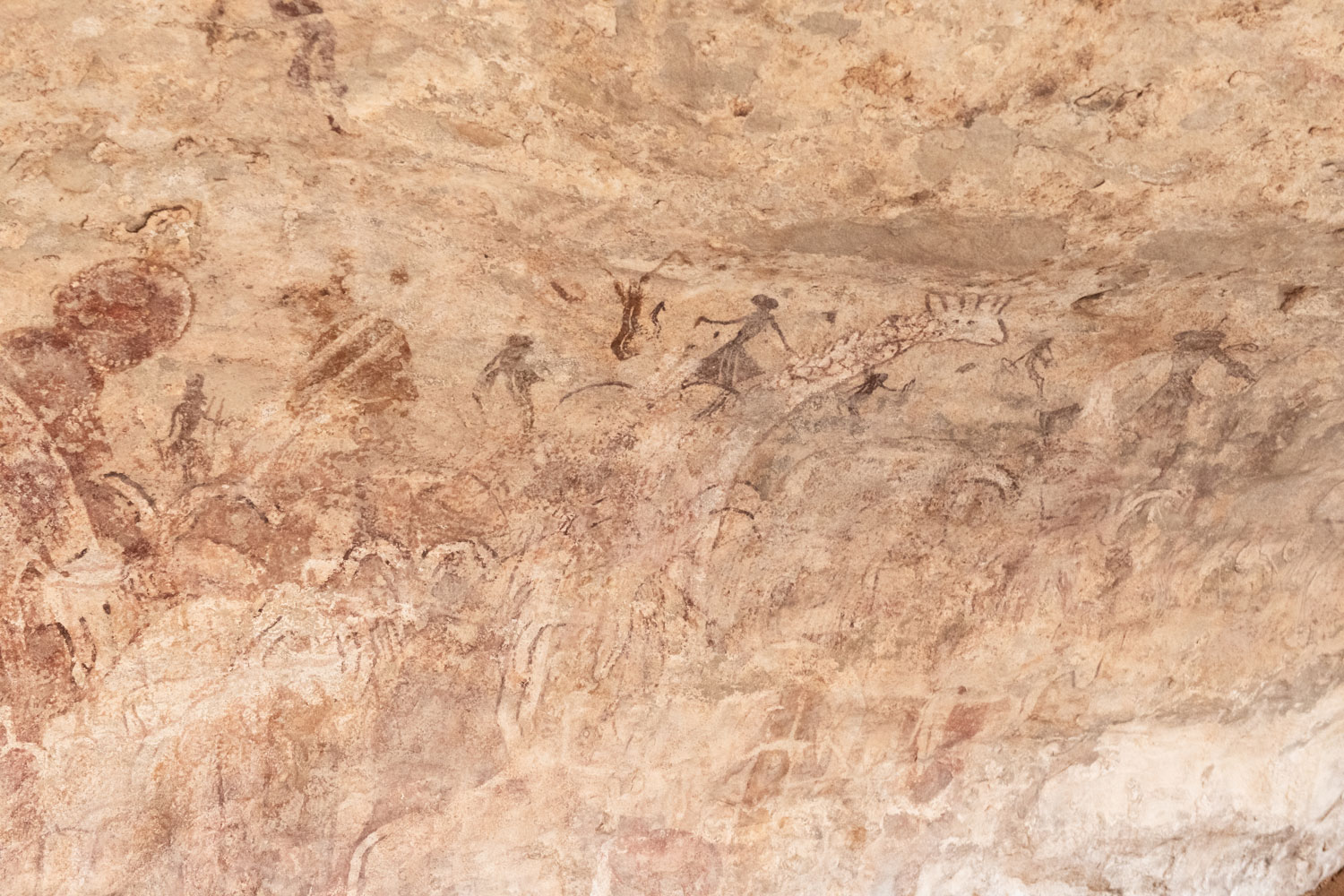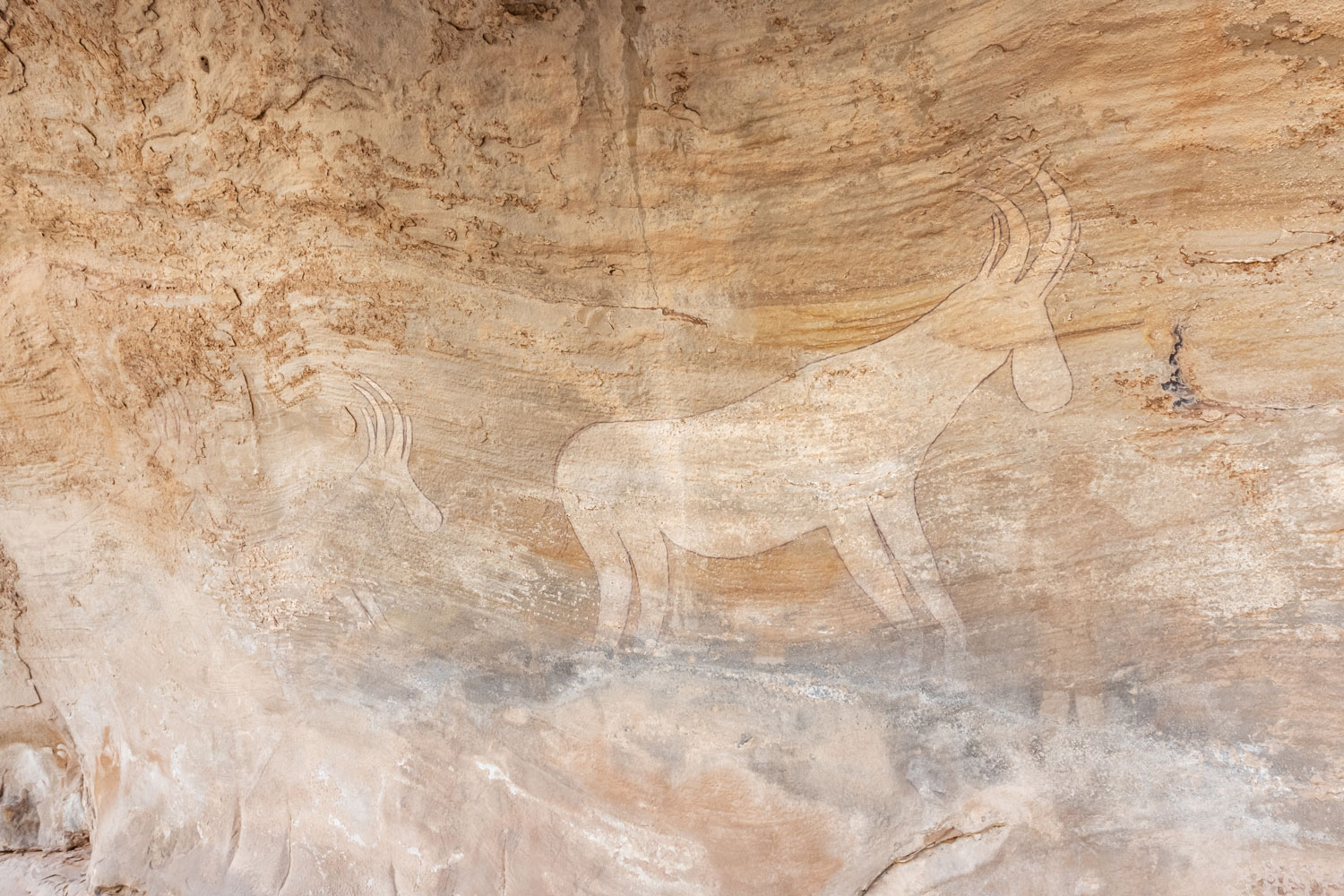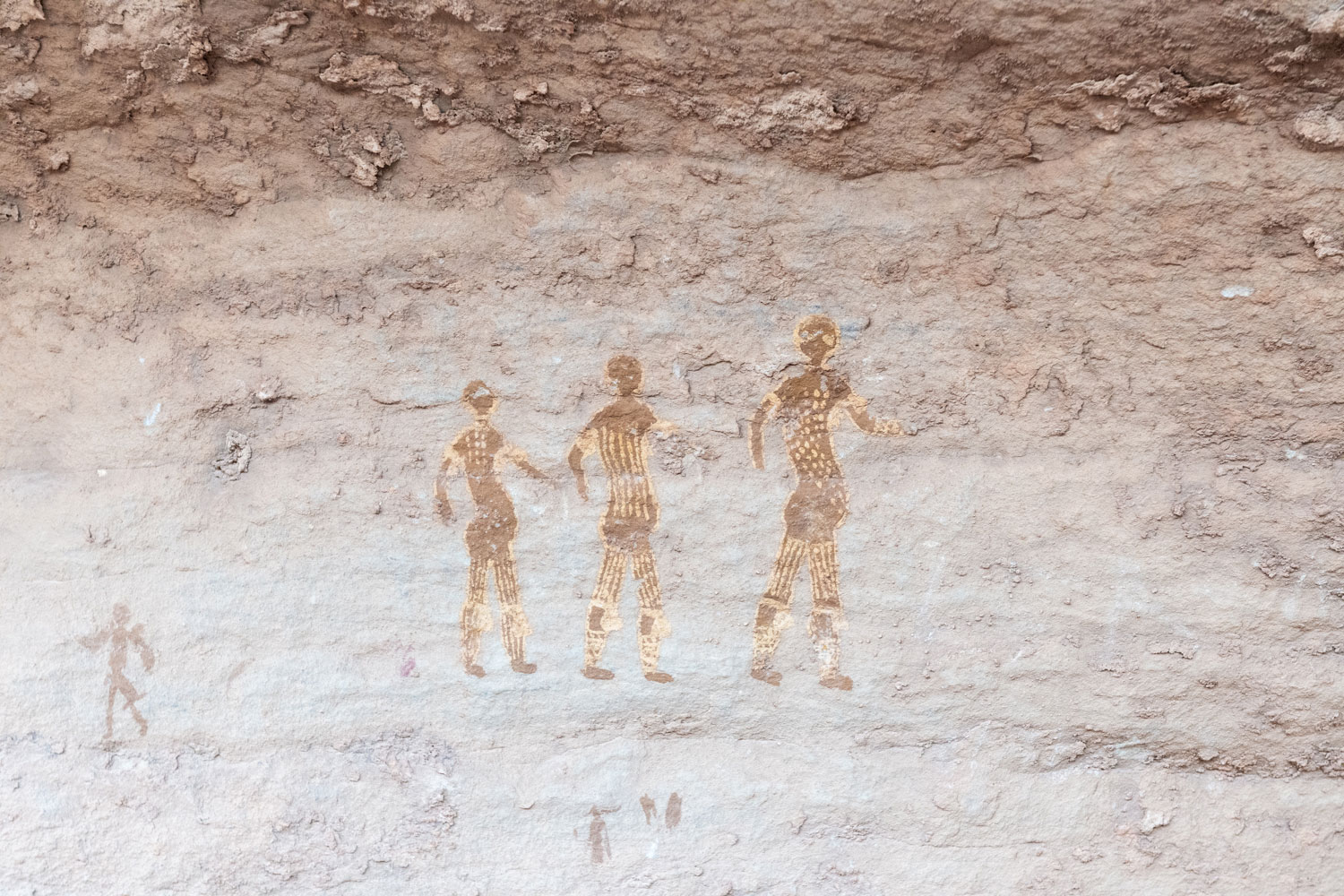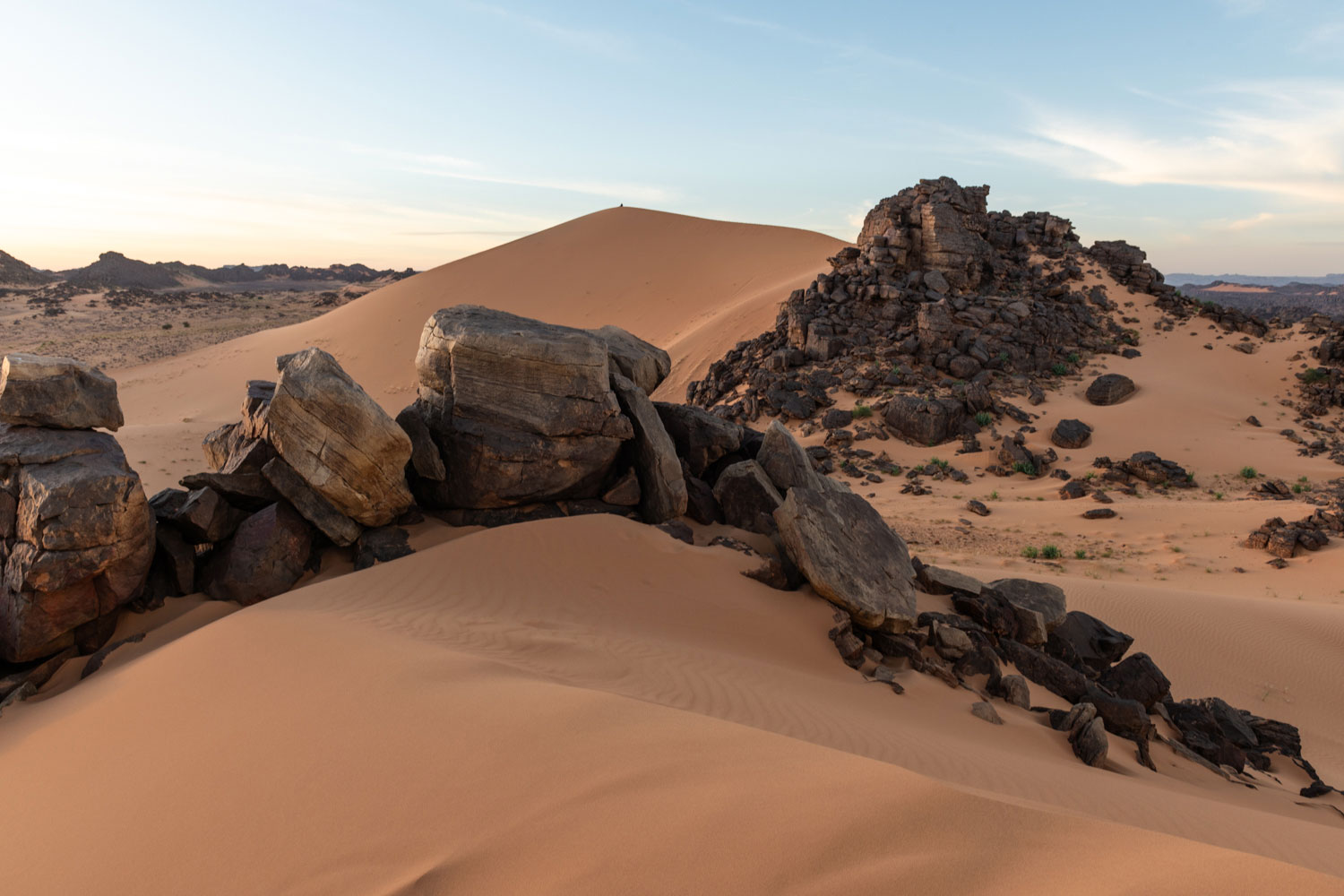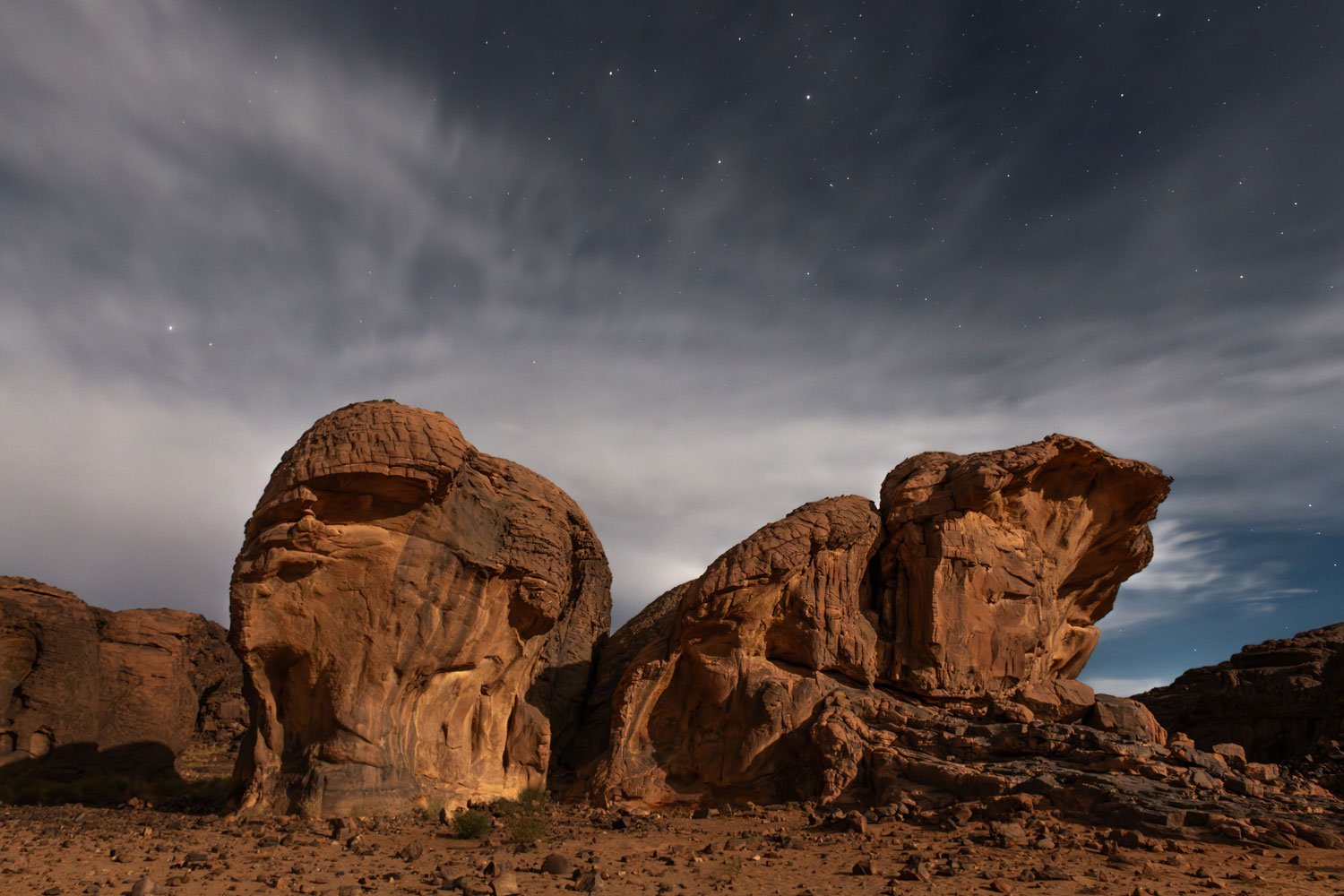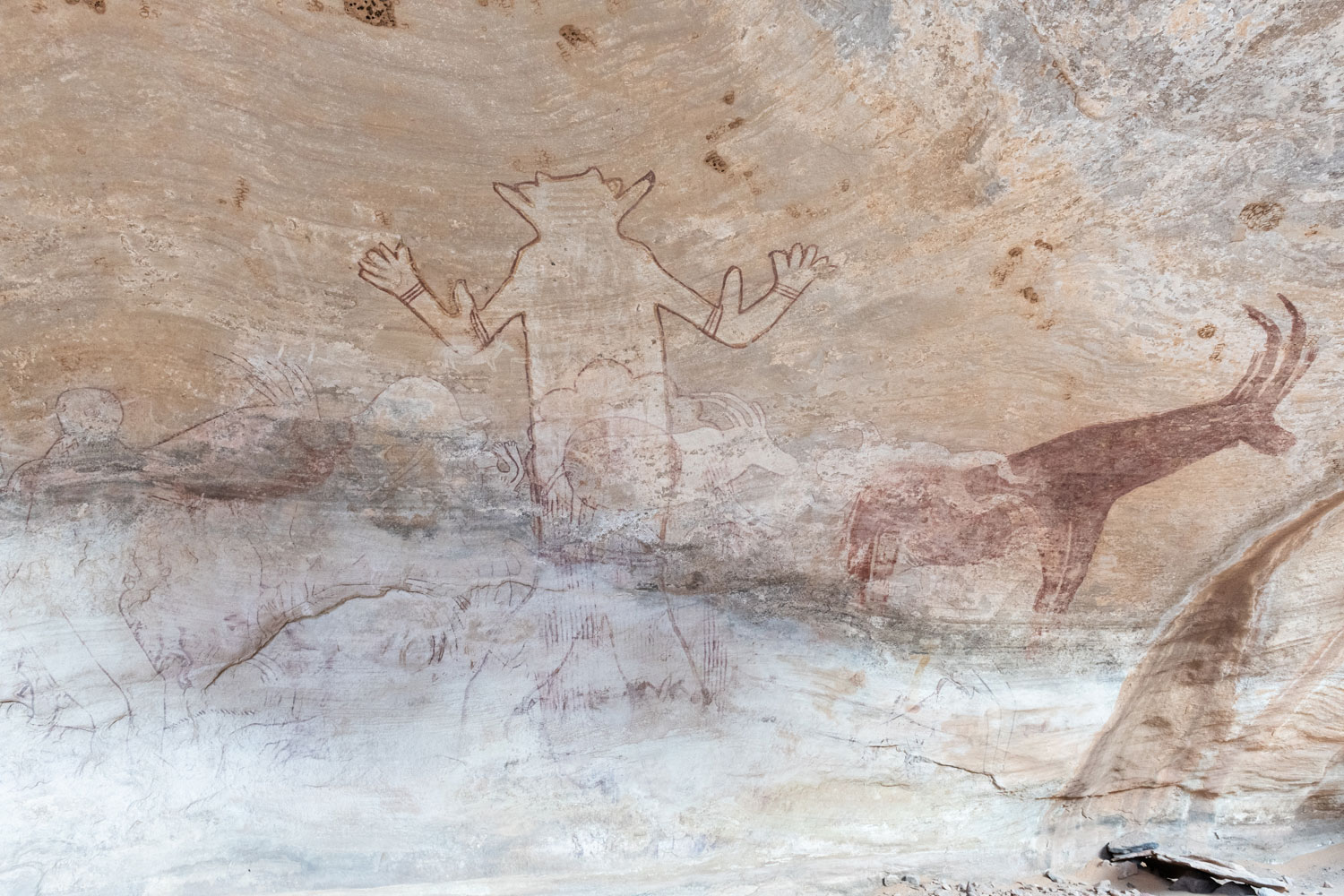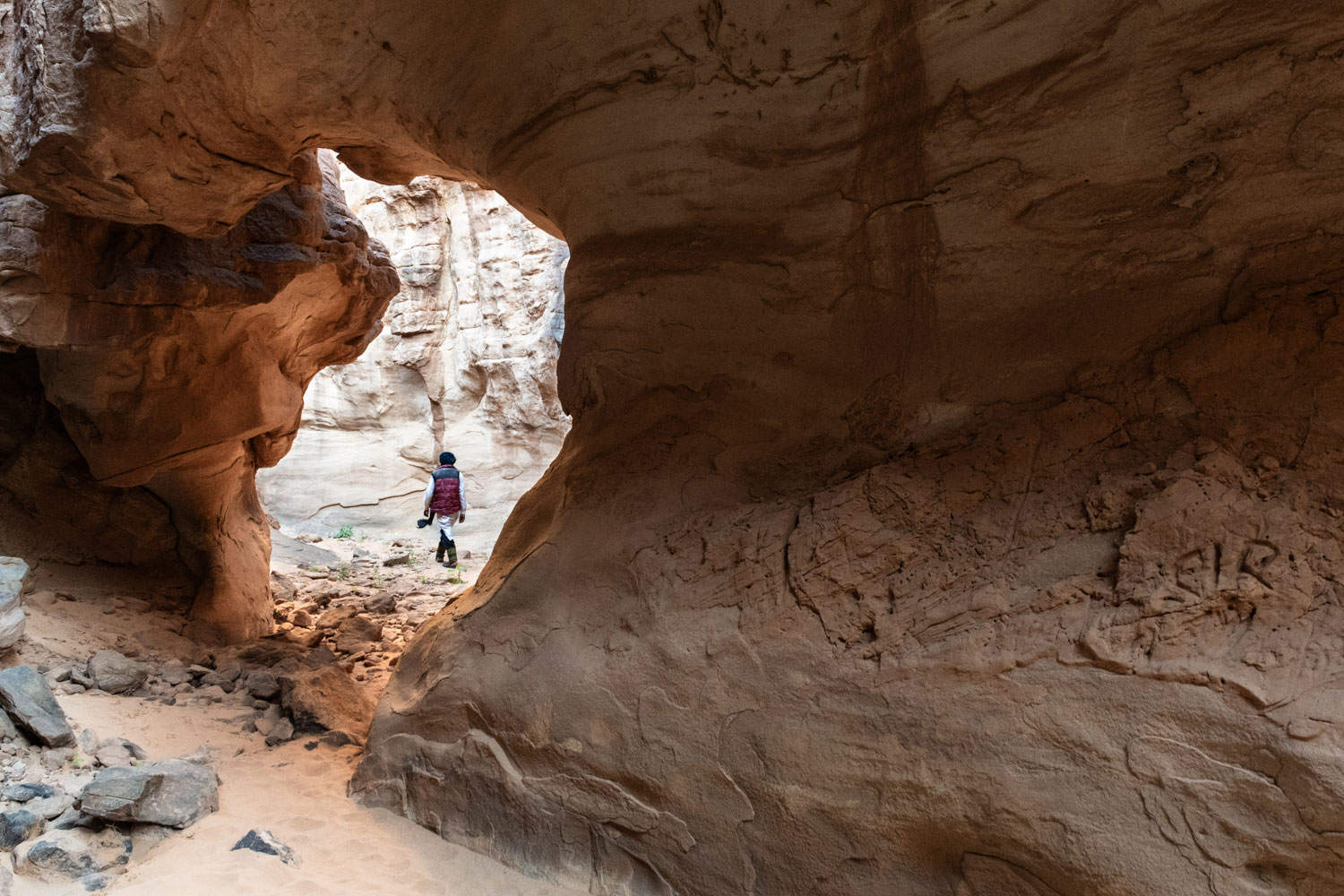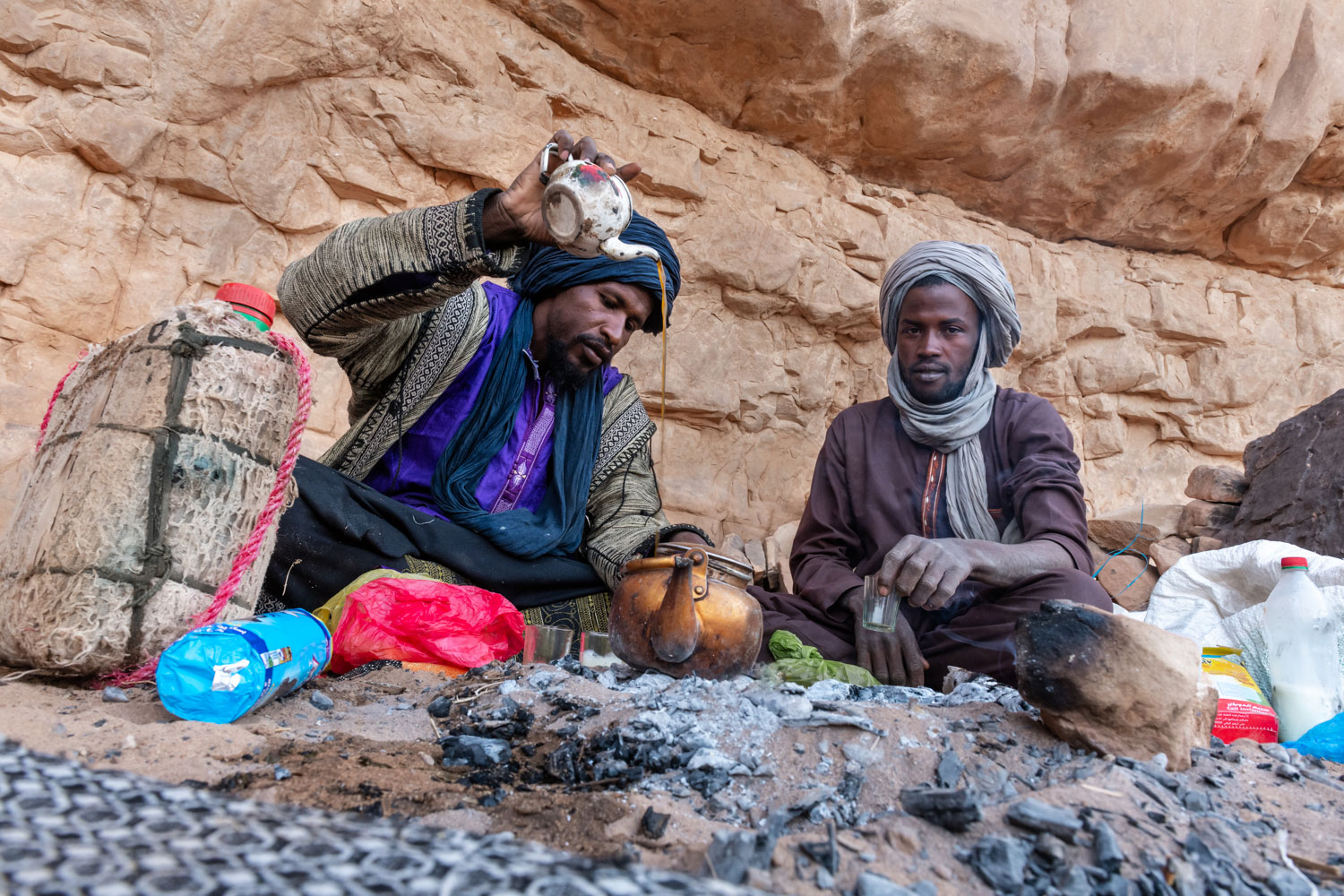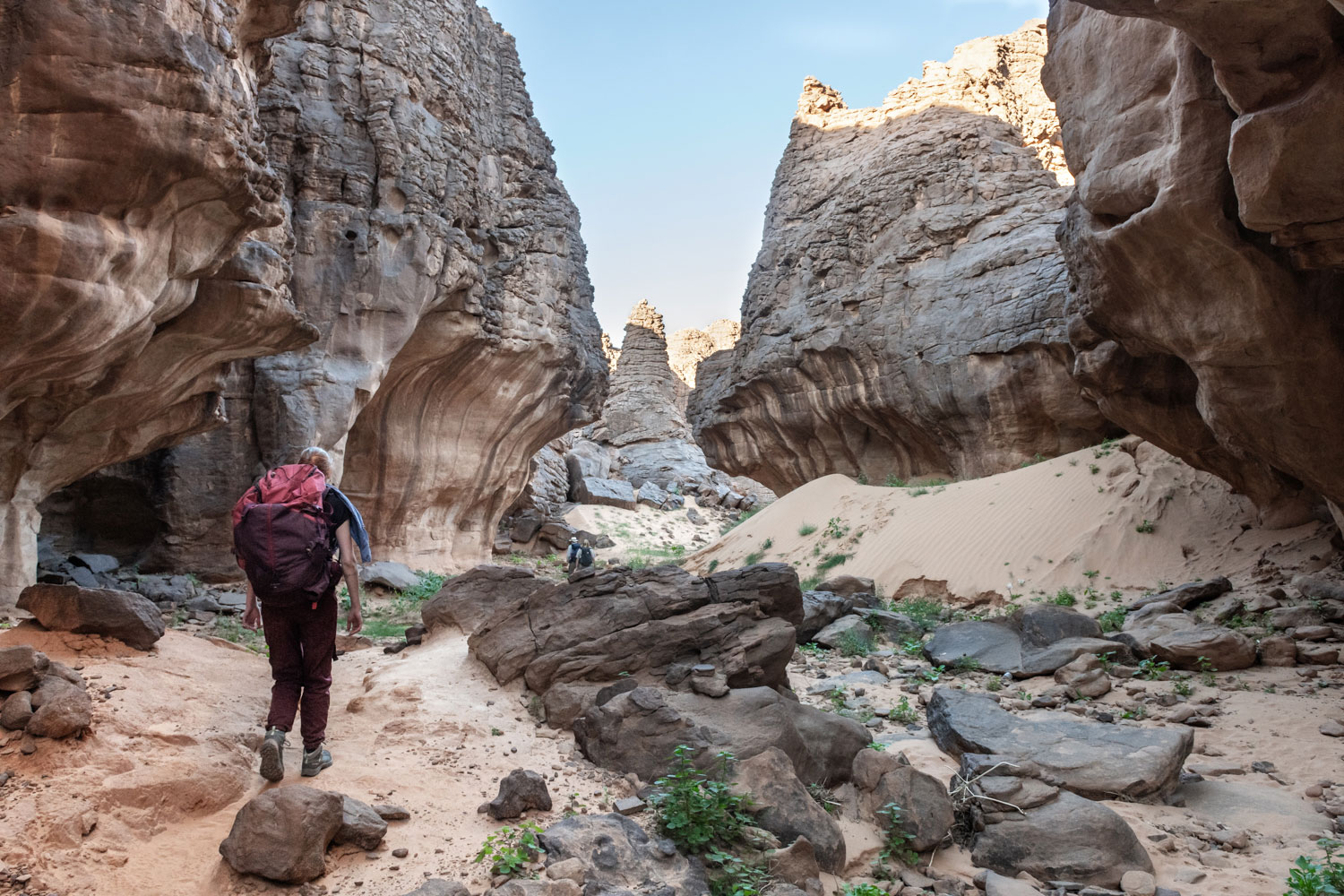Visit Tassili n’Ajjer in Algeria : a trip from Djanet to Sefar
The Tassili n’Ajjer is a cultural park located in the far south-east of Algeria. For a long time, this remote area on the edge of the Algerian Sahara remained little-known, as the region has experienced significant security and political instability over the last 30 years. But now the region is safe again and open to tourism, and we took the opportunity to visit Tassili n’Ajjer!
The Tassili n’Ajjer is a high plateau ranging in altitude from 1,000 m to over 2,000 m, which is unusual in the Sahara. The park is made up of rock formations sculpted in the past by water and today by wind, large sand dunes and small lakes, called Guelta, which can be found in canyons and gorges.
This area is one of the driest on the planet, with rainfall only every three years on average. The main town in the region is Djanet, one of the two Tuareg capitals along with Tamanrasset.
We had planned a short week for our visit to the Tassili n’Ajjer, and it was clearly too short, but we were nevertheless pleased with what we saw. We’ll definitely be going back, both to visit Tassili n’Ajjer and the Hoggar Cultural Park 700 km further west.
Algeria: from the Mediterranean to the Sahara
If Tassili n’Ajjer is one of Algeria’s pearls, the country, given its size and geographical location, boasts a huge number of exceptional natural sites. In Algeria, you can swim in the Mediterranean Sea in the morning, have lunch in a ski resort at midday, and dine with your feet in the sand of the Sahara in the evening. In fact, only a few hundred kilometres separate the Mediterranean Sea from the Sahara.
Several mountain ranges separate the Algerian coast from the desert. These include the Djurdjura range in Greater Kabylia, and the Aurès range in the region of the same name. These two mountain ranges also offer exceptional landscapes. In fact, in 2024, NASA has named three regions of the planet Mars after Algerian regions: Tassili n’Ajjer in the Sahara, Djurdjura in Kabylia and Ghoufi in the Aurès. A tribute to the most beautiful landscapes in North Africa.
Algeria offers a wide range of different natural sites and historical remains dating back to prehistoric, Roman and Ottoman times. Visiting Algeria gives you the chance to enjoy all these landscapes. However, given the distances to be covered and the time needed to visit, we advise you to plan several trips if you want to see the whole country. At the very least, plan one trip to visit the north of Algeria, and a second to the far south.
The Sahara, a vast and diverse territory
In Berber, the word Sahara is pronounced in the plural. Indeed, the Tuaregs, the Berbers of the Sahara, consider that there are several different deserts in North Africa.
Some parts of the Sahara, such as the Tunisian Sahara or the Oued Souf region in Algeria, lie below sea level. These regions are essentially made up of small dunes with very thin sand. The water table is close by, allowing a wide variety of vegetation to grow. There are also a large number of salt lakes in these parts of the Sahara. And rich vegetation means insects, reptiles, birds and mammals.
Other parts of the Sahara, such as the Tassili n’Ajjer, are at altitude. The water table is very far away and these parts of the Sahara are much more arid, with less vegetation developing. These regions are rocky, with alternating very large dunes, sometimes over 300 m high.
This diversity makes visiting the Sahara particularly interesting and exciting, as each time you do so you discover a new aspect of these extreme environments, where only a few species such as fennecs, scorpions and certain beetles have adapted to survive.
The Tassili n’Ajjer, a visit in the footsteps of humanity!
Tassili n’Ajjer has been a UNESCO World Heritage Site since 1982. It was also declared a biosphere reserve four years later. Several endangered species can be found in the park. So much for the major interest in this natural site, for both humans and wildlife.
The rock paintings and engravings of Tassili n’Ajjer
It’s impossible to really describe how you feel when you see rock engravings dating back 8,000 years. We were lucky enough to visit the Tassili n’Ajjer and see many of these engravings and cave paintings. But the most incredible thing about these engravings is their subject matter. While some show scenes of religious rites, the majority depict the lives of the people who lived there, through scenes of hunting and celebrations. And depending on the period, the animals depicted in these paintings are completely different. Some scenes show giraffes, while others show animals from the savannah or the Sahara. And the explanation is simple: in this same part of the Sahara, the climate has changed completely over the ages!
Did you know that the Sahara was an inland sea, then a jungle, then a savannah? These rock engravings are living proof that the desolate landscapes of the Tassili n’Ajjer were once home to millions of animals and species now found further south in Africa, where water is available all year round.
At a time of major climate changes and the challenges facing humanity, this trip to the Tassili n’Ajjer enabled us to see that the same place can be a Garden of Eden and then become a desert where only a few adapted species live.
The landscapes of Tassili n’Ajjer
The landscapes of the Tassili n’Ajjer are worthy of Martian landscapes, so mineral, hot and dramatic is the environment. Sometimes a mixture of dunes and rock, sometimes deep canyons where it’s easy to get lost, sometimes hundreds of monoliths reaching for the sky, the Tassili landscapes surprised us with their diversity and beauty. Admittedly, we had to earn them by walking for several days to reach sites inaccessible by motorised vehicle, but the effort was well worth it!
What’s more, the gorges and canyons were as impressive as they were unexpected. All you had to do was step into a gap and you’d find yourself in a labyrinth of rock where it was impossible for us to find our bearings. Our Tuareg guide, on the other hand, was completely at ease in his environment. He didn’t need a map or GPS, everything was written in his memory!
The landscapes of the Tassili n’Ajjer are punctuated here and there by tufts of grass, but above all by majestic acacias whose long thorns quickly dissuaded us from taking shelter from the sun. These thorns fall into the sand and can even pierce hiking boots.
Occasionally, at the bottom of a canyon or gorge, we found a waterhole, like a mini oasis in the middle of the desert. These watering holes (gueltas) have been used for thousands of years to drink, wash and water their animals.
Finally, here and there, we came across blocks of rock loaded with pigments. These pigments were used in the rock paintings. Such pigments are found on mountains and rocks, sometimes creating beautiful cameos of colour.
Sefar, the troglodyte village of Tassili n’Ajjer
Sefar is quite simply the largest troglodyte village in the world and an open-air museum! Several thousand people have lived here from prehistoric times to more recent times.
Situated on the Tassili n’Ajjer plateau, Sefar was only known to the Tuareg, who avoided it because some of the pagan cave paintings frightened them.
Sefar boasts some 15,000 engravings and cave paintings depicting the lives of our ancestors over a period of 8,000 years. This rock art is one of the proofs of the climatic changes that the region has undergone. It bears witness to animal migrations, changes in flora and human culture in North Africa and Sub-Saharan Africa.
During our trip to Tassili n’Ajjer, we experienced some incredible emotions at Sefar. This historic site had a real impact on us. We felt like we were following in the footsteps of our ancestors. Seeing their daily lives, their concerns and their art was a privilege!
Sleeping at Sefar also gave us the chance to live the experience to the full, a bit like a trip back in time. We spent the day wandering around this labyrinth, discovering a rock painting or engraving at every turn. The rock formations were equally impressive. In fact, you can’t visit Sefar without a guide. Suffice to say, we would have been lost after just 5 minutes.
Finally, the highlight of the visit to Sefar was the “Great God” painting. This 20m² scene depicts, among other things, a great character called the Great God. We don’t know whether this character was a god, a demon or some other representation. What is certain, however, is that it was an important figure, so imposing is its size.
The Tuareg, an indigenous people with an ancestral culture
The Tuareg are a Berber ethnic group living in southern Algeria, southern Libya, Niger, Mali and Burkina Faso. Historically nomads, they have gradually settled in the main towns of the Sahara. The Tuaregs of Tassili n’Ajjer live in the small town of Djanet. They belong to the Kel Ajjer group and speak Tamahaq, a Berber variant of Tuareg people. They also speak French and, for some of them, English. So it’s pretty easy for tourists to communicate in the region.
The Tuareg culture is open to others. During our visit to the Tassili n’Ajjer, we were surprised by the welcome, friendliness and curiosity of the Tuareg people. Despite their isolation, they remain open to the world. The only thing they ask in return is respect for their culture. If you consider them your equals, they will open the door of their home to you.
The Tuaregs know the Tassili n’Ajjer territory inside out. Where you might only see a desert of rock and sand, they see it as their favourite environment.
Today, the Tuaregs work in tourism, but also in trade and agriculture. It is impressive to see how active and dynamic they are in such an extreme environment as the Sahara.
The Tuareg people were the other discovery of our trip to the Algerian Sahara.
Hiking in the Tassili n’Ajjer
During our stay in the Sahara, we were lucky enough to hike in the Tassili n’Ajjer. This 4-day hike took us to the village of Sefar. It should be pointed out that it was early November. The weather was mild, but the daytime temperatures were still close to 30°C, while at night it was cool (between 8°C and 12°C).
We were surprised by the difference in temperatures when we spent some time in the shade. With the light breeze, we were even cool enough to put on a fleece jacket!
Hiking in the Tassili n’Ajjer was not easy. While the gorges and canyons provide shelter from the sun and allow you to walk in good conditions, some parts are huge rocky platforms that you have to cross in full sun. So you’ll need to bring something to cover your head and body, as well as sun cream and sunglasses.
And because the terrain is rocky, if you visit the Tassili n’Ajjer you’ll need good climbing boots, especially to protect your ankles from sprains.
Finally, given the steep gradients on some days (up to 900 m), it’s important to train for a trek before embarking on this adventure.
In terms of equipment and clothing, we used our usual spring or autumn hiking gear. We wrote an article on equipment for self-sufficient trekking a few months ago.
As we were visiting the Sahara, we also took along a portable solar panel. We were able to recharge our phones and cameras with no problem using just one panel. It’s impressive to see how effective can be solar panels in the Sahara!
Getting a visa for Algeria
Europeans and Americans need an entry visa to travel to Algeria. This visa is fairly easy to obtain and costs between €90 and €120, depending on nationality. However, since 2022, Algeria has offered a procedure for obtaining a visa on arrival, in other words at the airport. But this procedure only applies to the departments of the Sahara. There are therefore two separate procedures for obtaining a visa, which we describe here.
How to apply for a visa for Algeria via the consulate
The first procedure is to go directly to your nearest Algerian consulate to apply for an Algerian visa. The procedure is fairly straightforward, and the documents required are easy to obtain. The fee for this visa application is around €100.
Finally, it generally takes 14 days to obtain a visa from the Algerian consulate.
How to apply for a visa on arrival for the Sahara
This new visa procedure for the Algerian Sahara is only available to travellers who book a trip through a travel agency in the Sahara. The agency is responsible for making the application to the Algerian authorities. All you have to do is fill in a form and send it to the agency, together with a copy of your passport. However, visa fees for this procedure can be higher. They range from €45 to €365, depending on the duration of your trip.
We used this procedure to visit Tassili n’Ajjer and it’s true that it’s much more comfortable.


